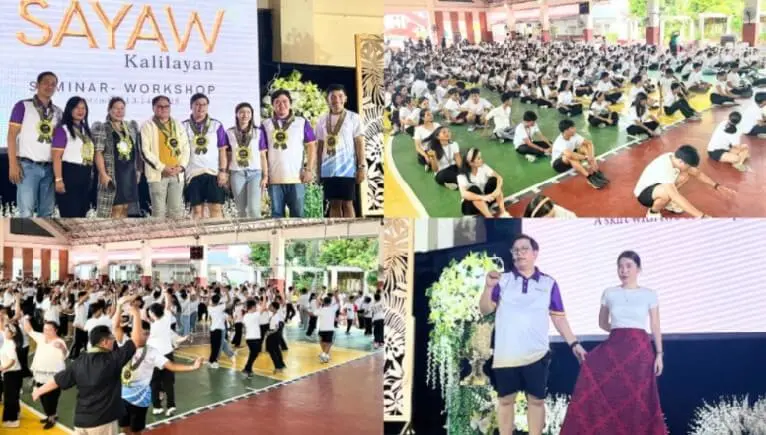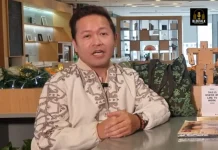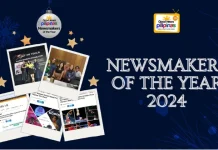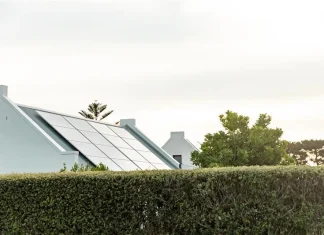
It was a success!
The Kalilayan Folkloric Group (KFG), in collaboration with the Rotary Club of Makati Ayala Triangle (RCMAT), the Manuel S. Enverga University Foundation (MSEUF), and the Rotaract Club of Kalilayan Makati Ayala Triangle, successfully held a free folk dance seminar-workshop on September 13 and 14 in Catanauan, Quezon Province. And yes, I was fortunate to witness it firsthand.
The seminar-workshop, Sayaw Kalilayan 2025, was an advanced celebration of KFG’s upcoming 30th founding anniversary next year. It was only fitting to hold it where it all began—in the old town of Catanauan.
It was jam-packed!
With free registration, students, teachers, folk dancers, and heritage advocates from across the province—as well as from Malabon City, Taguig City, Marikina, and even as far as Oriental Mindoro—seized the opportunity to learn the folk dances of Quezon. Nearly 500 participants joined. For one special weekend, all roads led to Bondoc Peninsula’s coastal heritage town.
The partner organization, Rotary Club of Makati Ayala Triangle, was also present, led by Ma. Linda Moya (President), Gemma Jose (Treasurer), Richard Jose, Mark Anthony Ochoa (Youth Service Chair), and Jahleel Ochoa (Youth Service Co-Chair), who braved the five-to-six-hour drive from Manila to attend the opening day. What an inspiring show of support!
It was timely!
In his speech during the opening ceremony, RCMAT Youth Service Chair Mark Anthony Ochoa shared that this endeavor was timely, as it awakens cultural memory in today’s age of gadgets and technology.
“Sa panahon ng gadgets at teknolohiya, napapanahon ang ganitong pasinaya na kung saan muling nabubuhay ang mga kuwento, awit, at sayaw tungkol sa ating bayan (In this age of gadgets and technology, a celebration like this is timely, as it brings back to life the stories, songs, and dances about our nation),” he said.
He also stressed that initiatives like this nurture patriotism among the youth, fostering love for the country, and a stronger sense of national identity.
“Bawat galaw na isinasayaw, bawat kasuotan na isinusuot, at bawat himig na binibigkas ay hindi lamang pagtatanghal. Ito ay pamana na muling isinasabuhay sa kasalukuyan. Every movement danced, every costume worn, and every melody performed is not merely a presentation. It is a heritage being brought to life in the present),” Ochoa shared.
“Sa pamamagitan ng aktibong pakikilahok sa sining at kultura, natututo ang mga kabataan na magmalaki sa kanilang pinagmulan. Ang pagmamalaking ito ang nagpapalakas ng ating pagkakakilanlan bilang Pilipino (Through active participation in arts and culture, the youth learn to take pride in their roots. This sense of pride strengthens our identity as Filipinos).”
It was similar to a mother’s love!
Meanwhile, RCMAT President Linda Moya drew a parallel between our culture and a mother’s love, calling on the youth to take part in heritage preservation as it is the source of our identity as a people.
“Ang pagmamahal ng isang ina ay walang katapusan. Iniingatan, inaalagaan, inaaruga, isinasalin at ipinapasa sa kanyang mga anak. Ganito din ang ating kultura (A mother’s love knows no end. She protects, cares for, nurtures, and passes it on to her children. Our culture is much the same),” she said in her speech.
She went on explaining that culture, like a mother’s embrace, offers both warmth and guidance that shape not just individuals but entire generations.
“Kagaya ng yakap ng ina, nagbibigay-init, gabay, at pagkakakilanlan sa bawat henerasyon. Tulad ng isang ina na hindi napapagod sa pagtuturo, pagsasalin at pagpapasa ng pagmamahal. Samakatuwid, ang ating lahi ay patuloy ding nagbibigay ng pamana sa pamamagitan ng iba’t ibang tradisyon at anyo ng sining… (Like a mother’s embrace, it gives warmth, guidance, and identity to every generation. Just as a mother never tires of teaching, nurturing, and passing on her love, so too does our heritage continue to be handed down through various traditions and forms of art),” Moya continued.
“Itinuturing natin ang ating ina bilang pangunahing guro ng pagmamahal at dangal. kahalintulad din sa ating kultura. Nagsisilbing ugat na nagbibigay buhay at saysay sa pagkatao nating lahat We regard our mother as our first teacher of love and dignity; in the same way, our culture serves as the root that gives life and meaning to our very being),” she added.
It was a celebration!
The seminar-workshop was indeed a celebration. Just like what Enverga University Vice President for External Relations Celso Jaballa said in his welcome remarks.
“Sayaw Kalilayan is a celebration of movement and meaning. Ito ay pagkakataon para matuto, magbahagi, at higit sa lahat maramdaman ang pagmamalaki sa ating sariling kultura (It is an opportunity to learn, to share, and most of all, to feel pride in our own culture),” he shared as the cultural initiative shone a spotlight on three notable folk dances of Catanauan—Abaruray, Tubong, and Malagueña.
These dances were researched and documented in the 1990s by the late National Artist for Dance, Ramon Obusan, together with Rommel Padillo Serrano, founder and artistic director of the Kalilayan Folkloric Group (KFG) and a proud son of Catanauan, Quezon.
You can check out the workshop videos of these three folk dances—taught by Serrano himself, with KFG dance trainers and performers Renato Castelo and Dave Parsley Lavalle (President of the Rotaract Club of Kalilayan Makati Ayala Triangle)—here:
Abaruray de Catanauan
Tubong de Catanauan
Malagueña de Catanauan
It was enriching!
Aside from the dance sessions and lecture-demonstrations, the two-day workshop-seminar was further enriched by Serrano’s talk on Filipiniana costumes across different chapters of Philippine history, as well as on choreography and the theatrical elements of staging folk dance productions.
Meanwhile, cultural researcher and heritage advocate Aquino Irasga Jr. discussed the art and science of conducting folk dance research. He outlined the steps and procedures involved—from gathering data in the community to documenting, analyzing, and interpreting these traditions for preservation, stage presentation, and future transmission.
And for the participants’ appreciation, the organizers also mounted a mini-exhibit of the Kalilayan Folkloric Group’s costumes—some of which are already considered museum pieces.
Overall, the two-day event was a vibrant blend of movement, visuals, and discourse—all in celebration of the art and heritage of Catanauan. After all, folk dancing is not just about the steps; it is a total package that weaves together movements, meanings, and costumes rooted in a specific period of history. To watch a folk dance is to witness a creative expression of culture, identity, and memory.
It was a dream come true—and generous too!
The success of Sayaw Kalilayan was a dream come true for Serrano, serving as his way of giving back to his alma mater, his hometown, and his home province while marking more than 30 years in the creative industry.
His generosity extended further. He not only provided certificates for the attendees but also shared online copies of dance literature along with corresponding newly arranged music. For free!
“Para mai-promote nila ang [mga sayaw mula sa] bayan namin. Kasi sa amin ito, e,” he told me.
It was true bayanihan.
Aside from the organizing team and partner organizations, Sayaw Kalilayan 2025 would not have been a success without the support of many helping hands.
Enverga University, led by Principal Marian Cadiz, graciously hosted the event and made arrangements for the visiting delegates, with the student government providing active support—from registration and seating to ensuring that participants enjoyed a comfortable overnight stay on campus.
The pioneer batch of the Kalilayan Folkloric Group also came to show their support, even serving as dance demonstrators alongside Manila-based current members.
Even the stage itself transformed and became a showcase of artistry, thanks to the creative work of Ramon Gutierrez and his apprentices.
Truly, we can safeguard intangible heritage such as folk dances through bayanihan and the strong support of various institutions.
I mentioned this in a previous column on how Batangas City is working to preserve and promote its heritage: it takes a village, a city, or even a whole province to conserve pieces of art so rare and beautiful that we cannot simply leave them confined to textbooks or videos.
They need to be performed, shared, disseminated, and passed down to new generations. And that requires a collective effort.
On the way back to Manila, I couldn’t help but reflect on how blessed Catanauan is to have recorded and documented folk dances, as well as cultural workers and supporters committed to safeguarding their heritage, and new generations of culture bearers ready to carry the torch forward.
Read more Good Travel stories from Atom Pornel here:
- Inside the Colors of Pahiyas: A Celebration of Faith, Heritage, Harvest, and Community | Atom Pornel
- A Cultural Renaissance in Batangas City: The Rise of Talumpok Subli | Atom Pornel
- Cultural Threads: Tracing Traditions from Davao del Sur to South Cotabato | Atom Pornel
Join our vibrant Good News Pilipinas community, where we celebrate the achievements of the Philippines and Filipinos worldwide! As the Philippines’ No. 1 Website for Good News and proud winners of the Gold Anvil Award and Lasallian Scholarum Award, we invite you to connect, engage, and share your inspiring stories with us. Together, let’s shine a spotlight on the stories that make every Filipino proud. Follow us on all platforms through our LinkTree. Let’s spread good news and positivity, one story at a time!










